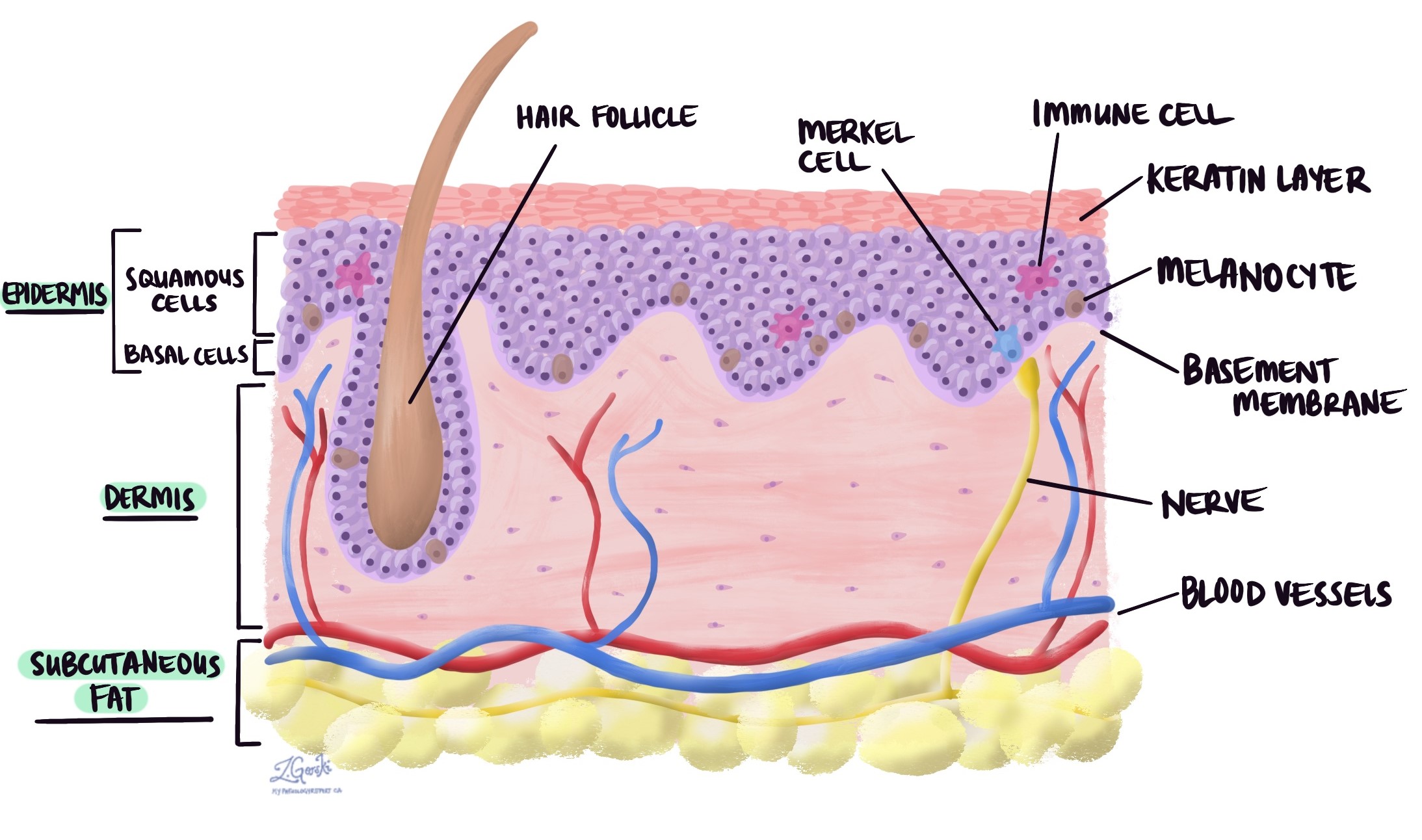by Jason Wasserman MD PhD FRCPC and Zuzanna Gorski MD
December 21, 2023
Squamous cell carcinoma in situ or Bowen’s disease is an early non-invasive type of skin cancer. It starts from squamous cells normally found in a part of the skin called the epidermis. If left untreated, squamous cell carcinoma in situ can evolve into a more aggressive type of skin cancer called invasive squamous cell carcinoma.

What are the symptoms of squamous cell carcinoma in situ?
Squamous cell carcinoma in situ typically presents as a slow-growing, red, scaly area of skin. This condition typically involves sun-exposed areas of the body, specifically the face, neck, lower legs, and hands.
What causes squamous cell carcinoma in situ?
The most common cause of squamous cell carcinoma in situ is long-term and excessive exposure to UV radiation, typically from the sun but other sources such as tanning beds are also implicated. Immune suppression as a result of medications or immune dysfunction increases the risk of developing this condition.
Is squamous cell carcinoma in situ benign or malignant?
Squamous cell carcinoma in situ is made up of malignant cells, however, because the growth is non-invasive, the cells are unable to spread to other parts of the body such as lymph nodes. For this reason, treated early, this condition behaves like a benign disease.
What does the microscopic examination show?
In squamous cell carcinoma in situ, the normal squamous cells in the epidermis are entirely replaced by large, hyperchromatic (dark), and pleomorphic (showing variable shape and size) squamous cells. These changes are an example of dysplasia. Dyskeratotic cells (dying squamous cells) may also be seen. In addition, a large number of mitotic figures (cells dividing to create new cells) may be seen throughout the epidermis. In squamous cell carcinoma in situ, the atypical squamous cells should be confined to the epidermis. In contrast, in invasive squamous cell carcinoma, the atypical squamous cells have spread into the underlying dermis.

What does completely excised mean?
Completely excised means that the entire tumour was successfully removed by the surgical procedure performed. Pathologists determine if a tumour is completely excised by examining the margins of the tissue (see below for more information about margins).
What does incompletely excised mean?
Incompletely excised means that only part of the tumour was removed by the surgical procedure performed. Pathologists describe a tumour as being incompletely excised when tumour cells are seen at the margin or cut edge of the tissue (see below for more information about margins).
It is normal for a tumour to be incompletely excised after a small procedure such as a biopsy because these procedures are usually not performed to remove the entire tumour. However, larger procedures such as excisions and resections are usually performed to remove the entire tumour. If a tumour is incompletely excised, your doctor may recommend another procedure to remove the rest of the tumour.
Margins
In pathology, a margin refers to the edge of tissue removed during tumor surgery. The margin status in a pathology report is important as it indicates whether the entire tumor was removed or if some was left behind. This information helps determine the need for further treatment.
Pathologists typically assess margins following a surgical procedure like an excision or resection, aimed at removing the entire tumor. Margins aren’t usually evaluated after a biopsy, which removes only part of the tumor. The number of margins reported and their size—how much normal tissue is between the tumor and the cut edge—vary based on the tissue type and tumor location.
Pathologists examine margins to check if tumor cells are present at the tissue’s cut edge. A positive margin, where tumor cells are found, suggests that some cancer may remain in the body. In contrast, a negative margin, with no tumor cells at the edge, suggests the tumor was fully removed. Some reports also measure the distance between the nearest tumor cells and the margin, even if all margins are negative.

About this article
This article was written to help you understand this condition and your pathology report. Contact us if you have any questions about this article or your pathology report.



